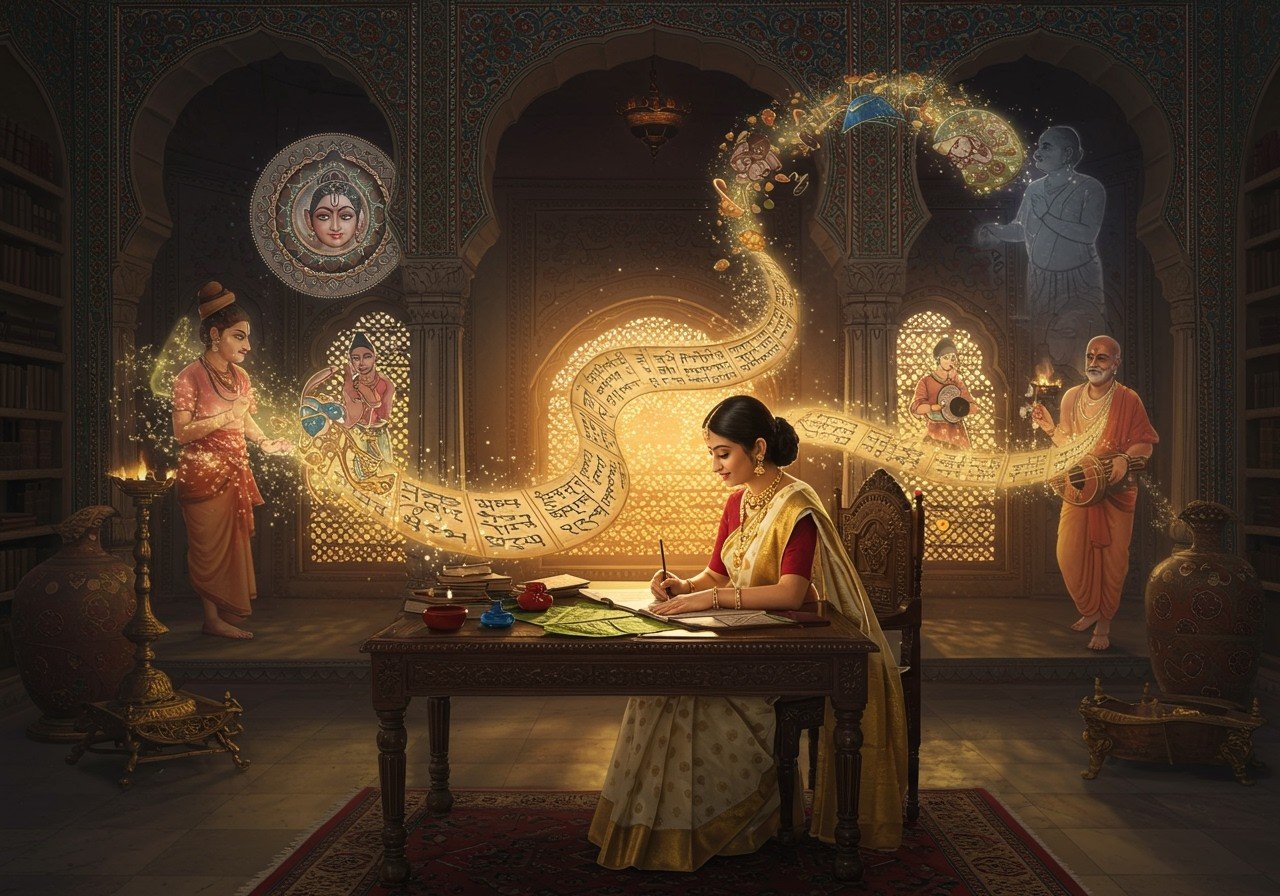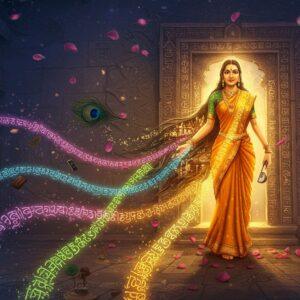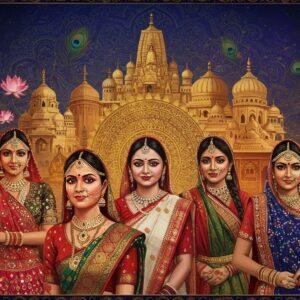
In the tapestry of Indian literature, figures of speech, known as alankaras in Sanskrit, hold a special place. They’re not mere decorations; they’re the very essence that adds depth, beauty, and philosophical meaning to our rich literary heritage. From ancient scriptures to modern poetry, alankaras breathe life into words, making them resonate with emotion and deeper understanding. Think of the alaṁkāraśāstra, the “science of poetry,” as a testament to how seriously we take the art of expression, both in our oral traditions and written works. Figures like the celebrated poet Jayadeva stand as examples of how these tools can elevate language to an art form.
At poojn.in, we understand the significance of these traditions. Our platform offers a wide selection of authentic puja items, delivered right to your doorstep. Browse our collection of Pooja Samagri to find everything you need for your spiritual practices.
Delving into the Types of Alankaras
Broadly, alankaras are categorized into two main branches:
- Arthālaṁkāra: These figures of speech work on the level of meaning, playing with semantics to create vivid imagery and comparisons. Think of similes (upamā) and metaphors (rūpaka), which draw parallels between seemingly unrelated concepts, enriching the meaning and creating a deeper impact. They help us understand complex ideas through relatable comparisons, making the abstract more tangible.
- Śabdālaṁkāra: These figures of speech focus on the sound of words. The beauty of rhyme, rhythm, and assonance falls under this category. They appeal to our sense of musicality, making the language itself a source of pleasure and adding a lyrical quality to the verses. They’re the reason certain passages stay with us long after we’ve read them.
Need specific items for your puja? Poojn.in offers high-quality Kalash, Kumkum, and Roli, essential for many traditional ceremonies.
Examples of Alankaras in Action
- Upamā (Simile): A simile paints a picture in our minds by comparing two distinct things using words like “like” or “as.” Imagine a line like, “Her face glowed like the moon,” instantly creating a sense of gentle radiance and beauty. It connects our emotions to the image, making it more memorable.
- Rūpaka (Metaphor): A metaphor takes comparison a step further by directly equating two unlike things, implying a similarity without explicitly stating it. For example, “The world is a stage” suggests that life, like a theatrical performance, has its various roles, dramas, and moments of both joy and sorrow. This direct connection creates a powerful impact and a deeper level of understanding.
- Dhvani: Dhvani is the magic of suggestion, the unspoken meaning that resonates beneath the surface of words. Closely linked to rasa (emotional essence), dhvani adds layers of depth and allows readers to experience a range of emotions beyond the literal meaning of the text. It’s what makes a poem or story linger in our thoughts, prompting reflection and personal interpretation.
Alankaras Across Indian Culture
Alankaras are woven into the fabric of Indian culture, appearing in various contexts:
- Ayurvedic Texts and Natyashastra: In these ancient texts, alankaras explain complex concepts through vivid imagery, making intricate medical and artistic ideas more accessible. They make it easier to understand the balance of elements within us and how they interact with the world around us.
- Kavya and Kavyashastra: These poetic traditions rely heavily on rhetorical devices to create imaginative and expressive language, showcasing the artistry of words and the power of suggestion. This adds layers of meaning and encourages deeper reflection on the themes.
- Vaishnavism: Within the rich tapestry of Vaishnava scriptures, alankaras convey profound spiritual meanings and allegorical stories, deepening our understanding of devotion and divine love. They help us understand the leelas of the divine in a more relatable way.
- Purana and Itihasa (Epic History): In these epic narratives, alankaras illustrate spiritual concepts and the nature of the mind and desires. Metaphors and analogies make abstract ideas more tangible, allowing us to grasp the complexities of human nature and the journey of the soul. They connect us to the wisdom of our ancestors and the timeless stories of our heritage.
Looking for authentic Hawan Samagri? Poojn.in offers a pure and fragrant blend to enhance your sacred rituals.
Understanding the Importance of Alankaras
Alankaras are more than just literary devices; they’re the heart and soul of Indian storytelling, allowing us to connect with our rich cultural heritage on a deeper level. They help us understand complex ideas, experience a range of emotions, and appreciate the beauty of language. From ancient epics to everyday conversations, these figures of speech continue to enrich our lives and keep our traditions alive.
Frequently Asked Questions on Alankaras
What exactly are alankaras? Alankaras are figures of speech that enhance the beauty and depth of meaning in literature, particularly in poetry.
How do I use alankaras in my own writing? To use alankaras effectively, understand their different types and how they impact meaning and emotion. Experimenting with language and exploring different styles can also help you develop your own unique way of using them.
Why are alankaras considered so important in Indian literature? Alankaras are not merely decorative; they are integral to how we express ourselves, convey complex ideas, and evoke emotions. They enhance the aesthetic appeal of a text while adding depth and philosophical meaning.
Are there different types of alankaras? Yes, there are various types, such as arthālaṁkāra (semantic) and śabdālaṁkāra (phonetic). Each serves a different purpose and creates a unique effect on the reader.
Where can I find more information on alankaras? Many resources are available, from academic books and online articles to workshops and courses on Indian literary traditions. Exploring classic literature and poetry provides practical examples of how these figures of speech are used.
For a deeper understanding of Indian scriptures and epics, explore our blog post on the Ramcharitmanas and our exploration of the Hanuman Chalisa.
Complete your puja needs with our beautiful Baran Dala sets and authentic clay items available at poojn.in.


